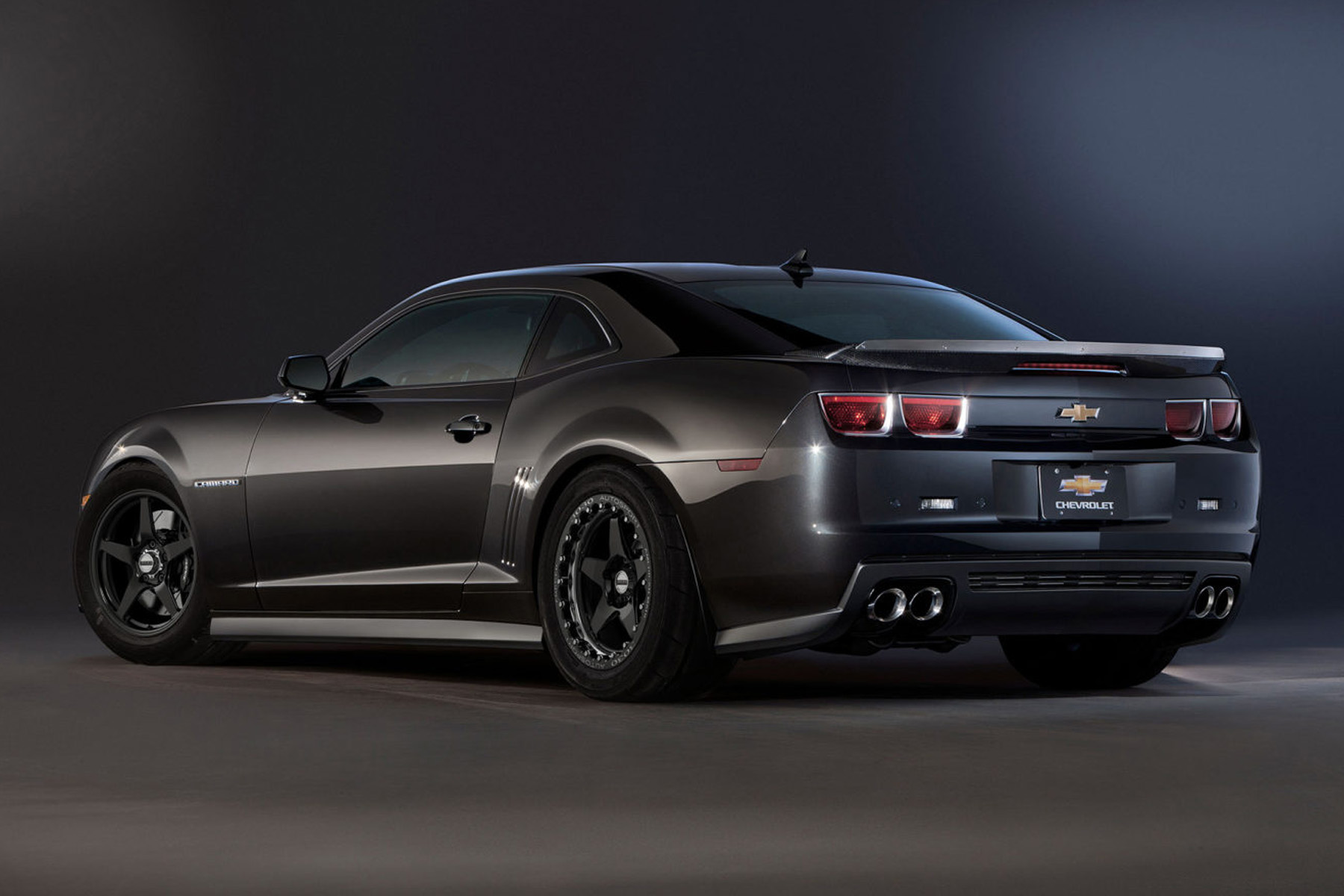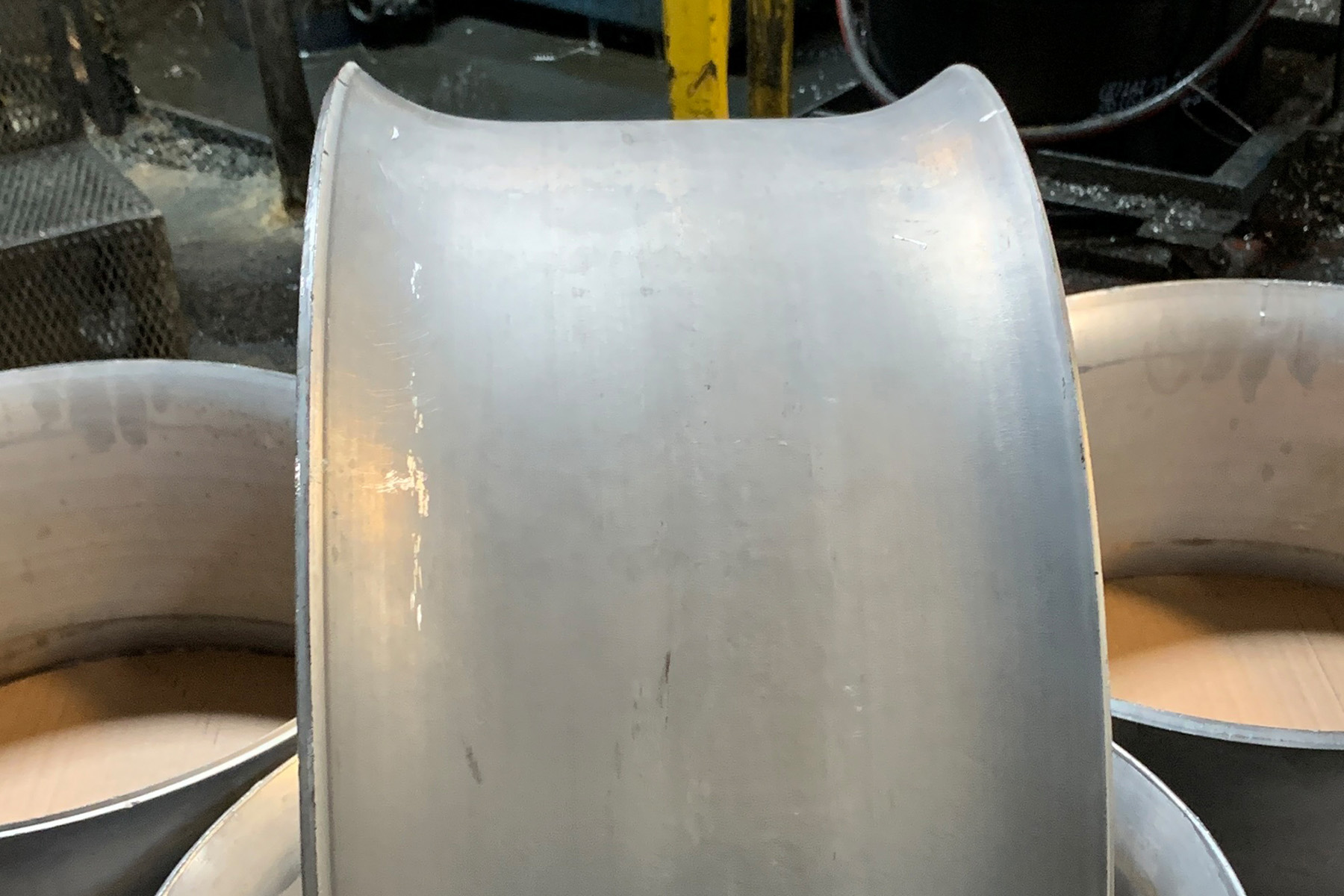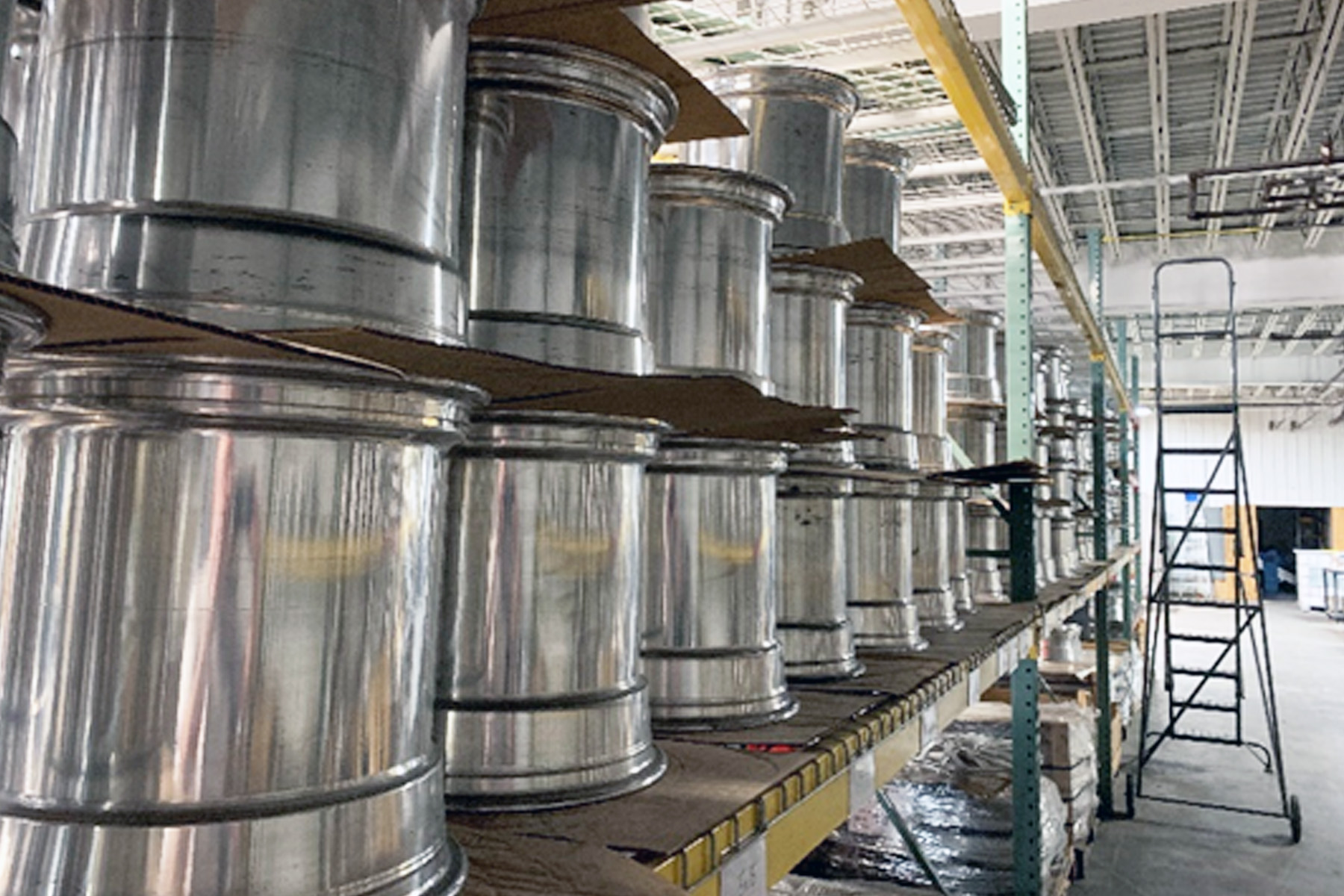Every performance wheel manufacturer has its own theories that make up its best wheel designs. One of the unique considerations surrounding 3030 Autosport is Keith Kern and Philip Watson’s initial statement that reads, “We are a new company with 30-years of experience.”
Keith Kern (left) and Philip Watson share a "30-years of experience" aphorism based on their professional backgrounds with some of the top wheel brands. They also share an engineering theology where they apply proven and innovative manufacturing processes to their wheel designs.
When I comment on wheel design theories, one unique aspect of 3030 Autosport is the varied concepts surrounding its different wheel products. The blueprints for its hardcore drag racing wheels vary greatly from its corner-carving wheels that also differ from the street/muscle car wheel lines.
The two "Drag Ops" styles of drag racing wheels are the Launch and Legend designs. Each offers extensive options such as beadlocks, multiple backspacing options, bolt patterns, and matched frontrunner wheels.
We will take a specific look at the Drag Ops Series wheels for hardcore street and dragstrip applications. Keith Kern, President at 3030 Autosport, explains the different design theories that go into its various wheel lines and the individual designs that are implemented into each drag racing wheel.
3030 Autosport DragOps Frontrunner Wheels
“Our frontrunner wheels for drag racing are what is called a monoblock construction. The important thing for me, it’s the absolute best way you’re ever going to design and produce the 15×3.5-, 17×4.5- and 18×5-inch front drag racing wheel,” Kern explains. “There are frontrunners that are bolted together out there; there are frontrunners that are welded together. None of them are as straight, strong, and as lightweight as a monoblock design.”
The monoblock is essentially as the name describes. These front wheels start out as 50-to 70-pounds of forged 6061-T6 aluminum sourced in America. The wheel is completely computer-controlled (CNC) lathe and mill machined, which maintains the material thickness.
Each accumulation of varied manufacturing processes prioritizes the best individual wheel for each motorsport. These raw one-piece forgings and machining steps illustrate the technique exclusively used to create the 3030 Autosport monoblock (one piece) frontrunner wheels.
Whether it be a frontrunner or a wide rear wheel, most manufacturers use roll-formed or stamped rim sections which are created from aluminum sheets. The aluminum is rolled and flash-welded, then they’re stamped to shape. These processes actually stretch that material out. The rim thickness can vary at different points, causing a radius to be thinner where they may need to be thicker. 3030 Autosport only produces monoblock frontrunners for racing and uses spun seamless rim sections for their two-piece welded drag wheels.
If you think the frontrunner designs are unique, take a look at the rear Drag Ops Series wheels that provide even more cutting-edge ideas. The Launch and Legend designs are available in 15×6- to 15×15-inch widths and offer a wide assortment of backspacing, bolt patterns, and wheel beadlock options. All Drag Ops Series wheels have been SFI 15.1 and 15.2 tested and certified for strength and safety.
Though many view the traditional drag wheel with a great amount of negative or "dish" offset for narrowed rear ends, the Modern Muscle lines of 3030 Autosport Drag Ops wheels feature high positive offset options for late model fitment.
Different Wheels, Different Overall Designs
Three-piece wheels such as the 3030 Autosport’s MOD3 Series have a forged center which is assembled to an outer rim half and an inner rim half. This design is best suited for road racing or track and performance applications to offer the highest strength for cornering applications.
Kern explains the Duo-Block Construction wheels. “Our HyperStreet series is engineered with the entire front half of the wheel as one solid forged piece. Then a spun rim half is bolted on the back of that. This optimized design yields a high strength-to-weight ratio for serious performance and aggressive track driving.
Solid blocks of 6061-T6 aluminum are heated in preparation for 16,000 tons of pressure that form them into 3030 Autosport wheel centers. A forging press and shaped die begin the forging cycle by compressing the material. This shaping process also strengthens the grain structure. The center forging then continues to a heat treat process to establish a T6 temper material condition.
3030 Autosport’s rear drag wheels are also specially manufactured with a combination of processes that match their intended application. Kern comments, “We make three different designs of wheels. The DragOps models are created from two sections, the forged rim section and forged center, which is 360-degree welded on the backside.”
The Drag Ops Series wheels are actually tested (in addition to SFI specs) for a cornering aspect to handle the deflection on the track when lateral strength is needed. The trick is to manage that material, stay within the intended design aesthetic, and reach their strength goals with SFI certification. These forged aluminum wheels are not “flowformed” like some other brands. There are absolutely no imported materials used in its wheel lines that could even offer the possibility of sacrificing metallurgic wheel quality.
A seamless, ring-rolled blank is computer-controlled spun over a precision mandrel that is the exact shape and contour of the finished product. Unlike processes that stamp or press the material, spinning the rim shapes the aluminum in a similar fashion to rotary forging. This spinning process further strengthens the finished rim section as it adds designed material thickness to necessary locations.
“Each of the 3030 Autosport’s wheel models consists of varying fundamental designs,” contends Kern. “We concentrate on performance first and foremost; lighter plus stronger equals faster.”
Rear Drag Wheels
“Just like the frontrunners we described, the outer rim section on our rear Drag Ops Series wheels starts life as a solid block of billet,” Kern continues. This billet block is drilled, and then ring rolled and expanded. This ring expansion is a form of forging that elongates the grain and strengthens the rim – plus it is completely seamless.”
From that point, the rim goes through a computer-controlled spinning operation. This spinning operation forms all the contours and makes it what a rim section is. The importance of the spinning operation is multifold. This spinning process provides a high degree of accuracy. They can also engineer increased material thickness in areas of the rim for strength and thin it in other areas for conserving weight.
These shelves illustrate only a small portion of what's in stock for fast delivery of custom-built wheels. 3030 Autosport only uses premium components and materials made in America. The next step is a very calculated "shrink fit," where the rim section is heated, which expands, and then placed over the center section. The rim then cools as the two halves become tightly joined prior to the welding station.
The forged wheel centers are mated to the rim sections by heat expansion of the rim. Following the pairing, the rim cools and shrinks onto the center (known as sweating). The center section also has a small area of the prefinished surface machined to accept the upcoming weld.
“From there, we take that still hot wheel assembly, and we check it for two types of dimensional accuracy: radial and lateral runout,” Kern points out. “Lateral runout is the amount of sideways motion or the amount of “wobble” in a wheel. The radial runout is where the wheel’s radius is not consistent from the overall wheel centerline to any point on the rim. Our standard for radial runout is .001- to .015-inch. Much of the industry standard for wheels is about .040-inch.”
Alongside the rim machining, the center section is manufactured with a seven-step process. It includes multiple pretreat steps, a UV-resistant polyester clearcoat or black powdercoat finish, and a specialty seal coat that prevents outgassing. The center section is placed within the heated rim, where it cools and contracts onto the center section for an extremely tight fit.
An important part of the overall wheel process for these guys is the prep of the wheel material for finishing. While most coaters only use a solvent or steam wash, 3030 Autosport employs an OE-level pretreat process featuring a zirconium surface conversion and sealant, all based on a reverse osmosis water system for solid adhesion of all surface finishes.
With the two halves paired and checked to meet 3030 Autosport’s tolerances, the wheels are ready to proceed to the welding process. We have described many of the wheel’s machining and forming processes under computer control, but this is the pinnacle of their shop processes.
Welding the two forged aluminum Drag Ops Series wheel halves together is as much an art as it is a science. A robotic welder is used to control all aspects of the weld angles, speed, and current repeatability. On the weld fixture, the ring you see surrounding the rim section precisely draws heat from the rim during the welding process.
The wheels enter a robotic arm MIG-welding station. The wheels are double-checked for accuracy one final time, where they must pass a final .015-inch or less lateral runout. The typical industry standard for this tolerance is in the .020-inch and higher. The robotic MIG-welder fuses the halves together on a fixture table, also held to tight tolerances. This robot creates a seamless weld for the full 360-degrees between the rim and center section. Uniquely, there is a cooling ring that draws weld heat from the rim.
3030 Autosport Directive
Kern will note there are multiple quality wheel companies in America. However, distribution channels, retailers, and wholesalers can often complicate the buying process. These typical stacks of profit margins and passing the increase on to the customer is at the core of why 3030 Autosport is very different, not only in its wheel design beliefs but also in its sales process.
3030 Autosport offers an inventive tire beadlock system that is designed for your specific tire bead. You can choose a beadlock wheel that best mates to either a Mickey Thompson or Goodyear/Hoosier tire bead. The rings themselves are also created from ring-rolled and forged aluminum and use HeliCoils for added strength and longevity.
“We sell 3030 Autosport wheels directly to the auto enthusiast,” Kern adds. “You then do not see manufacturing corners cut to maintain profitability, nor enormous prices for top-tier wheels. Racers are then forced to give up the wheel they want for something affordable. You can visit our website and easily call us with any questions; that is simply the best factory-direct sales and service you should expect.”
Kern finishes, “It was our top goal to initially get our ideal manufacturing process for each individual wheel implemented. It is very important that we convey to the racers that we have been making wheels for 30 years, we’re now on our own with this new enterprise. This is the innovative wheel line and the customer-obsessed company we wanted to see throughout our careers with wheels that are engineered for performance and function first.”










































